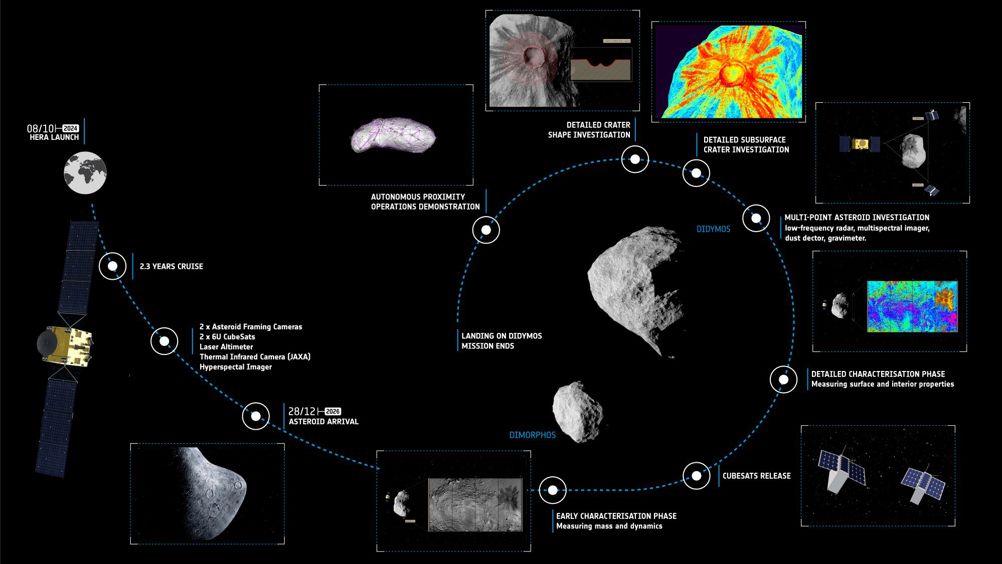Led by the European Space Agency (ESA), Hera is scheduled for launch on a SpaceX Falcon 9 rocket at 15.52 UK time. Its mission will see it fly by Mars in March 2025, before rendezvousing with the asteroid Dimorphos 177m km from Earth in December 2026. There, Hera will study the aftermath of NASA’s Double Asteroid Redirection Test (DART) probe, which slammed into Dimorphos in September 2022.
Related content
Hera is part of the international effort to establish a plan to counter an asteroid on a collision course with Earth. We currently know of more than 35,000 asteroids whose orbits are potentially threatening to Earth. Of those, around 1,600 are on ESA’s Risk List. Although none of the 1,600 are large enough to be considered ‘planet killers’, many are large enough to destroy a city.
To mitigate against this threat, DART became humanity’s the first ever attempt to change an asteroid’s orbit. It was deemed a huge success, but the mission raised as many questions as it answered, including the full effects of DART’s 6.1 km/s impact, the size of the crater, and the current mass and makeup of the asteroid. Hera will attempt to answer these questions, revisiting Dimorphos to gather close-up data about the deflected body and turn DART’s experiment into a potentially repeatable planetary defence technique.

Hera will also perform technology demonstration experiments, including the deployment of ESA’s first deep space cubesats – briefcase-sized spacecraft that will venture closer to Dimorphos to study it in more detail. One will look to identify the mineral composition of Dimorphos, while the other will deploy a radar antenna and attempt to make the first ever subsurface probe of an asteroid. Both CubeSats are slated to then land on Dimorphos in a final effort to garner more data.
Hera is an ESA mission and the first spacecraft developed under ESA’s Space Safety programme. It features contributions from 18 European ESA Member States and the Japanese space agency JAXA has provided one of the spacecraft’s scientific instruments. Unsurprisingly, the global Hera science community overlaps significantly with that of NASA’s DART mission.
The launch can be watched live on ESA WebTV; YouTube; X, and LinkedIn .












McMurtry Spéirling defies gravity using fan downforce
Ground effect fans were banned from competitive motorsport from the end of the 1978 season following the introduction of Gordon Murray's Brabham...